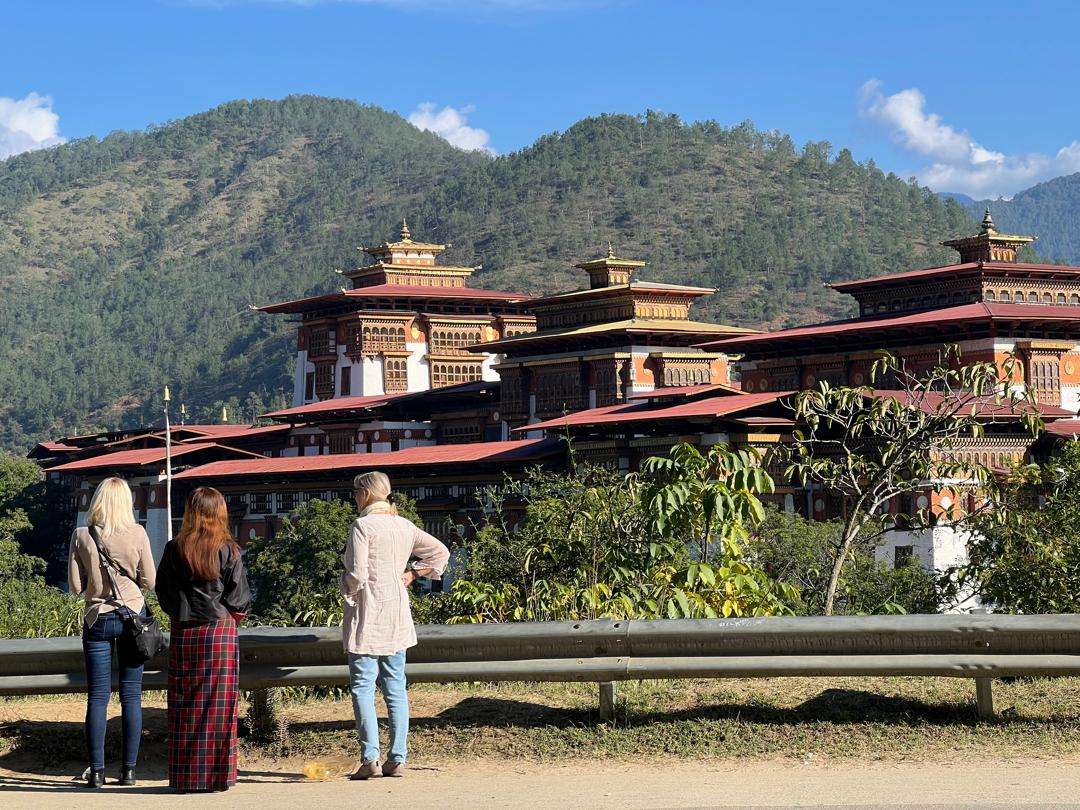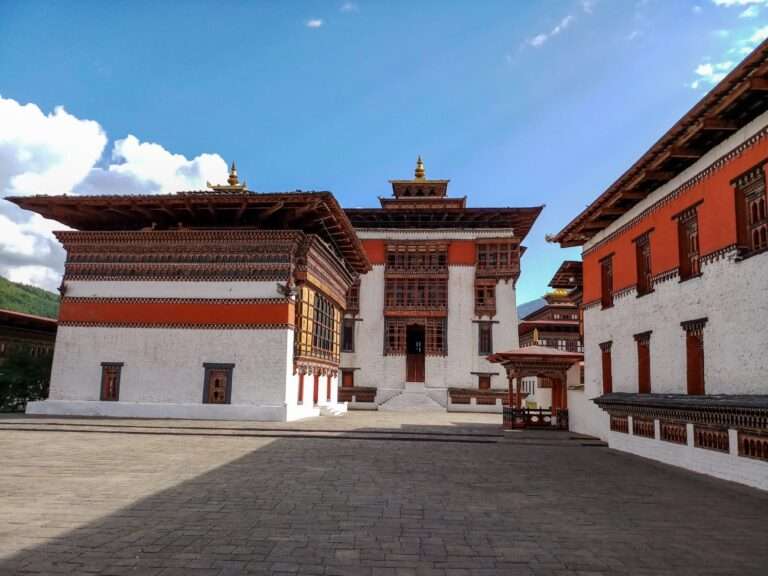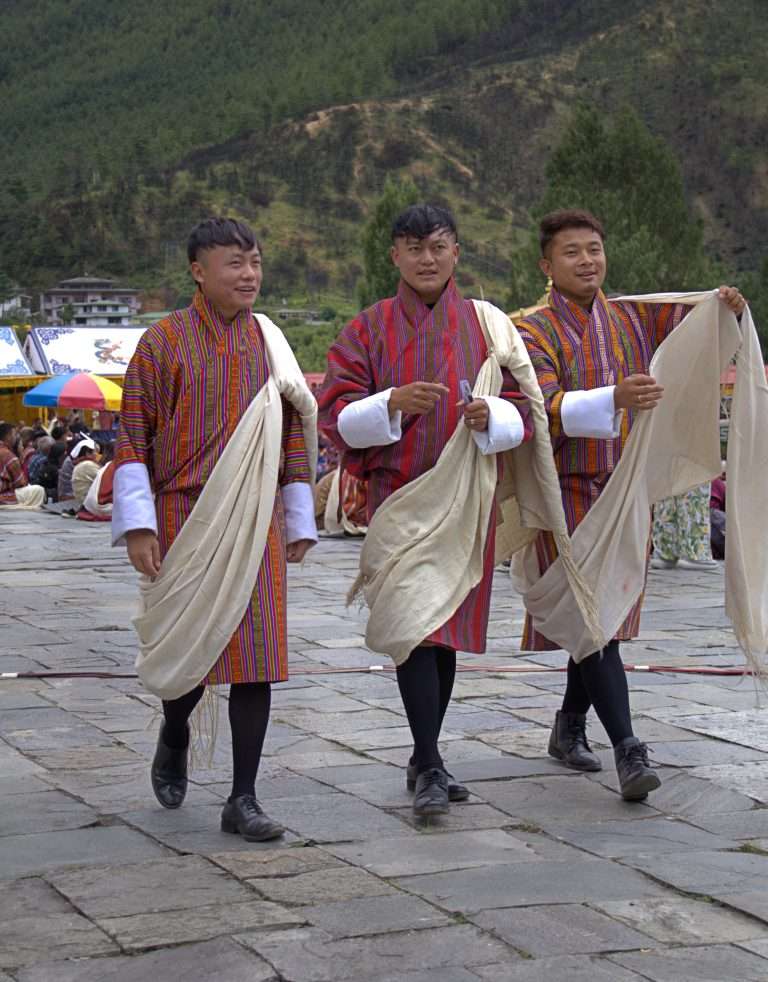EXCELLENTVerified Beautiful Bhutan Great experience! Fast and responsive communication right from the first WhatsApp message. Visa was sorted very smoothly and everything worked out as planned. I had a very kind and respectful tour guide (Lhazin Dorji) and a reliable driver who ensured a memorable stay. I really enjoyed my short stay in the land of the thunder dragon.Verified Bhutan Tour OMSHA Travel I had wonderful experience during our tour in Bhutan with OMSHA travel, our tour guide Tashi Tenzin and driver Sun-Zu were exemplerary, very friendly and accommodating in our tour. They guide us in every tourist spots we go and make sure we are safe, and enjoy every moment during our tour. One of the best tour guide and driver I've had. I will highly recommend them wheh you visit Bhutan. I will give them ⭐️⭐️⭐️⭐️Verified Extraordinary! ❤️ The experience is superb! Plus having one of the bests tour guides- nothing can be asked for! It wasn’t an awkward experience day by day, I get or rather we felt comfortable with them. Total happiness and very good experience..🫶🏻 we were taken cared well by Tashi Tenzin and Sanju!Kudos to them! It was also a hassle free experience and no hints of no can be given to the services provided! It was seamless even though our flight was delayed..Really this country has a lot to offer so the only regret is not having more days to stay and explore more..❤️👍🏻👏🏻All the bestVerified Eyeopening Experience We booked our Bhutan trip with OMSHA Travel and couldn’t be happier with the experience. We entered Bhutan via the India–Bhutan land border and OMSHA arranged everything seamlessly from the airport pickup in India to ensuring our safe entry into Bhutan. As two young ladies traveling together we truly appreciated the sense of security and care they provided throughout.Our 4D3N itinerary was packed and while we enjoyed every moment I would recommend staying longer if possible. Bhutan has so much to offer and travel time between destinations can take up a fair portion of the day. Sharing a general idea of what you would like to see beforehand also helps OMSHA customize the trip perfectly.A highlight was definitely the Tiger’s Nest Monastery. The hike is breathtaking but also steep and challenging so being reasonably fit is important to fully experience it.Overall OMSHA Travel made our Bhutan journey smooth, safe and unforgettable. Their attention to detail and hospitality left us with lasting memories. Highly recommended.Verified Good Experience With Sonam and Sunzu We found Omsha Travel as we were sourcing how to get from India to Bhutan overland and his website was very informative. He was also very quick with his replies on Whatsapp which we appreciated a lot. We had a 4D3N tour in Bhutan and the tour was very flexible and customisable, allowing us to choose wherever we wanted to go. Our guide and driver was Sonam and Sunzu (Soju) who were so friendly and we hit it off so well~ they treated us like friends and the conversations with them made us learnt so much about Bhutan. Sonam is very knowledgable with all the history and Sunzu drives very smoothly. Also, the hotels were top notch with very good views👍 We enjoyed the stay and could rest properly after a long day.If I could change anything about the trip, I would stay for more days to fully appreciate the beauty of Bhutan.Verified A smooth trip The tour was well organised and went smoothly. Appreciate the flexibility of the arrangements in taking into account our energy levels. The guide Sonam was fun and engaging, giving us many stories on Bhutanese culture. The drive was smooth too, thanks to our driver Tewang. All in all, a great trip.Verified Adventure, culture and a personalised tour of beautiful Bhutan Wondering how to put into words the experience we’ve had these past 6 days. Bhutan is a truly spectacular country and the people made the experience all the more special Organising the trip with Nawang was effortless. He understood immediately what we required and customised the trip according to our interests. Sonam, our guide is an absolute gem. He was so eager to share his knowledge and love for his country. He was friendly and extremely accommodating. His answer was always yes and it made our trip all the more special. We will always remember this trip and it’s because of him Our driver Tashi- quiet, respectful and extremely kind. Always greeted us with a smile. The hotels were clean and check in/out was seamless. We requested for a bike for 3 days and absolutely loved riding it. Both the guide and driver were very comfortable with handling both bike and car which made us feel very safe. We cannot recommend Omsha travels enough. If you are looking for a travel agent, don’t look any further.Verified Best experience ever! ⭐️⭐️⭐️⭐️⭐️Our trip to Bhutan has been one of the most memorable journeys of our lives, and a big reason for that is the incredible support we received from our travel agent Nawang, Omsha travels, guide, and chauffeur. From the very beginning, the process was made effortless—right from handling our visas and e-permits to ensuring every detail of our itinerary was perfectly organized.Our guide Sonaam was knowledgeable, patient, and always eager to share the deep cultural values and traditions of Bhutan in a way that truly touched us. Our chauffeur Tashi was equally wonderful—safe, courteous, and always with a smile, making long drives across the mountains not just comfortable but genuinely enjoyable.Most importantly, our travel agent took care of everything with great attention, leaving us free to simply enjoy the beauty of Bhutan without a single worry. The coordination between all three of them made us feel like we were traveling with family rather than professionals.Thanks to them, what could have been a complicated trip in a foreign country turned into the smoothest, happiest experience. We are returning with unforgettable memories, immense gratitude, and new friendships that we hope will last a lifetime.Highly recommend them to anyone planning a Bhutan trip—if you want hassle-free travel with warmth and genuine care, this is the team to go with!Verified Excellently organised Trip with Excellent Hotels and locations. Amazingly beautiful Country with amazing people- Beautifully designed trip covering all major spots. Plan min 7 daysVerified Amazing experience Our 3-day trip in Bhutan was an enrichment.Our guide Namgay and the driver were super nice and patient. They had arranged nice stays for us and let us taste the Bhutanese culture.I'm grateful that I got to do this trip with these beautiful people. I would recommend anyone such a trip!
Bhutan Tour Packages:
Travel Tips:
Blog Posts:
- Gangtey Gonpa Tshechu – A Spiritual Celebration Amid the Valleys of Phobjikha
- France to Bhutan Travel Guide: Everything You Need to Know
- Flights from Sydney to Bhutan via Bangkok: A Complete Guide
- Bhutan vs. Nepal Travel: Which Himalayan Country Should You Visit?
- Thangbi Mewang Festival: A Sacred Fire Blessing in Bumthang
Contact us:
Comparing Bhutan and Nepal for your next Himalayan journey? Here’s what makes Bhutan unique.
The mighty Himalayas are home to two captivating countries that offer incredible natural beauty, rich cultures, and spiritual depth — Bhutan and Nepal. At first glance, they might seem similar: both boast soaring peaks, ancient monasteries, and warm hospitality. But when you look closer, each country offers a distinctly different travel experience.
If you’re planning a Himalayan adventure and wondering which destination to choose, here’s a side-by-side look — and why Bhutan might just be your next dream journey.
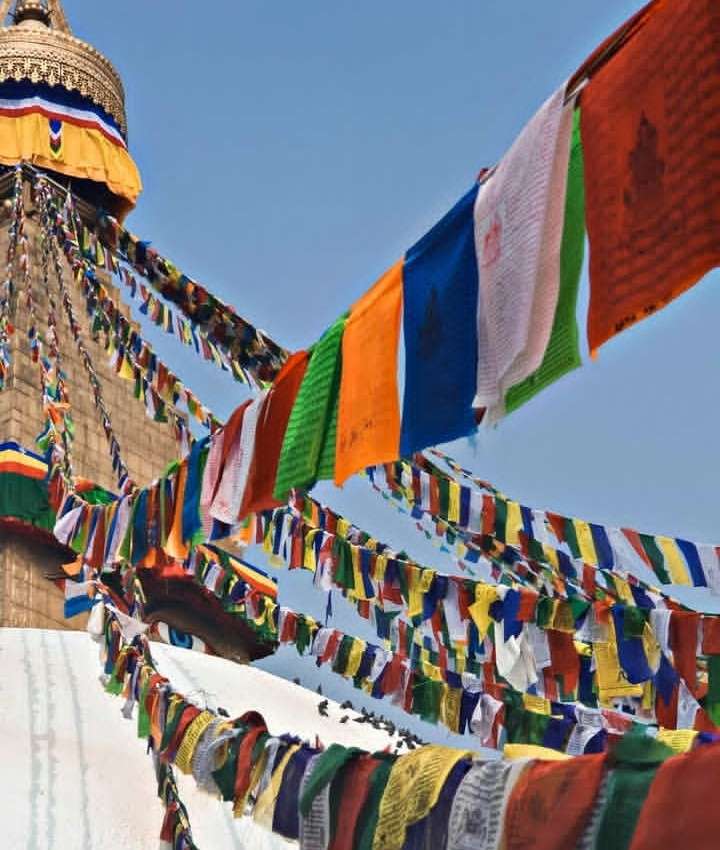
1. Cultural Experience: Living Heritage vs. Living Museum
- Nepal: With its centuries-old temples, bustling markets, and living heritage sites like Kathmandu Durbar Square and Bhaktapur, Nepal offers a vibrant mix of Hindu and Buddhist traditions. The culture is open, diverse, and shaped by a blend of influences from India, Tibet, and beyond.
- Bhutan: Known as the “Last Shangri-La,” Bhutan’s culture is deeply tied to its Buddhist roots and preserved through strict heritage policies. The architecture, traditional dress (gho and kira), and annual tshechu festivals are not just for show — they’re part of daily life. Visitors often remark that Bhutan feels like stepping into a living, breathing culture untouched by mass tourism.
Why Bhutan stands out: In Bhutan, the culture isn’t only preserved — it’s actively lived every day. There’s an authenticity and spiritual depth that’s hard to replicate.
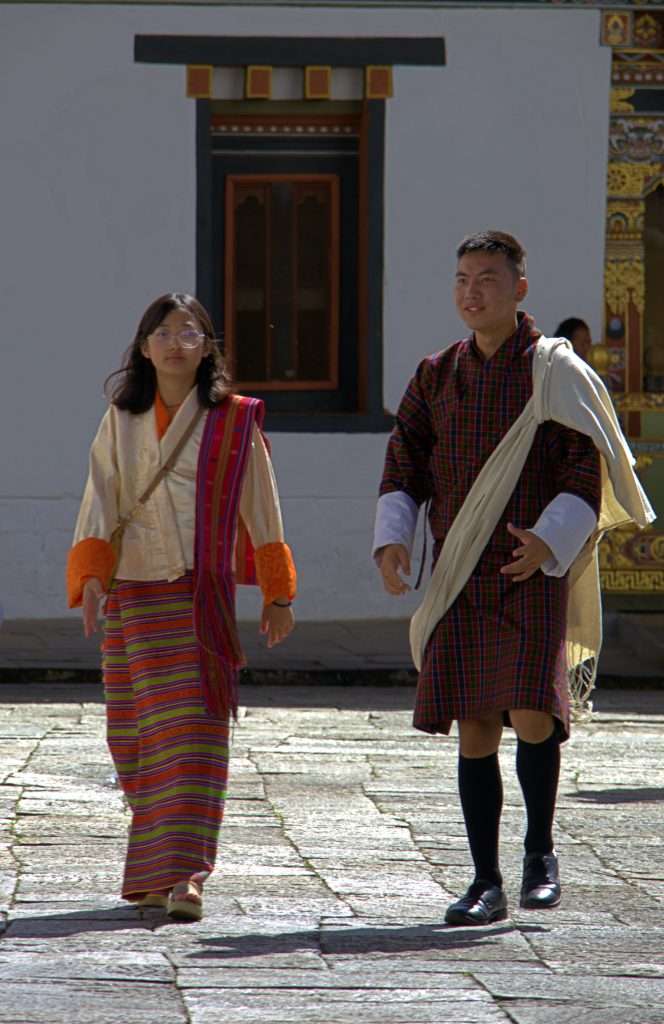
2. Tourism Style: Open Access vs. High-Value, Low-Impact
- Nepal: Nepal’s tourism is more open and budget-friendly. You can arrive and explore independently, with options for everything from $5-a-night guesthouses to luxury hotels. Trekking routes like the Annapurna Circuit or Everest Base Camp are accessible to all levels of travelers, with no daily minimum cost.
- Bhutan: Bhutan follows a “High-Value, Low-Impact” tourism policy. Visitors must pay a Sustainable Development Fee (SDF) and travel with a licensed Bhutanese tour operator. This approach limits mass tourism and helps preserve the environment and culture. The result? Fewer crowds, cleaner trails, and a more exclusive experience.
Why Bhutan stands out: The controlled tourism model ensures a serene, uncluttered experience — you’ll rarely have to jostle for space at a monastery or viewpoint.
3. Natural Landscapes: Peaks vs. Valleys
- Nepal: Home to eight of the world’s 14 highest mountains, including Mount Everest, Nepal is a paradise for mountaineers and trekkers. The landscapes range from high-altitude glaciers to subtropical jungles in Chitwan.
- Bhutan: Bhutan’s landscapes are equally dramatic but less about summiting peaks and more about immersing in pristine valleys like Paro, Punakha, and Bumthang. Snow-capped mountains form the backdrop while lush forests, rice terraces, and rivers dominate the foreground.
Why Bhutan stands out: Bhutan is about the harmony between nature and culture. Many treks here, like the Jomolhari Trek, offer solitude and untouched wilderness.
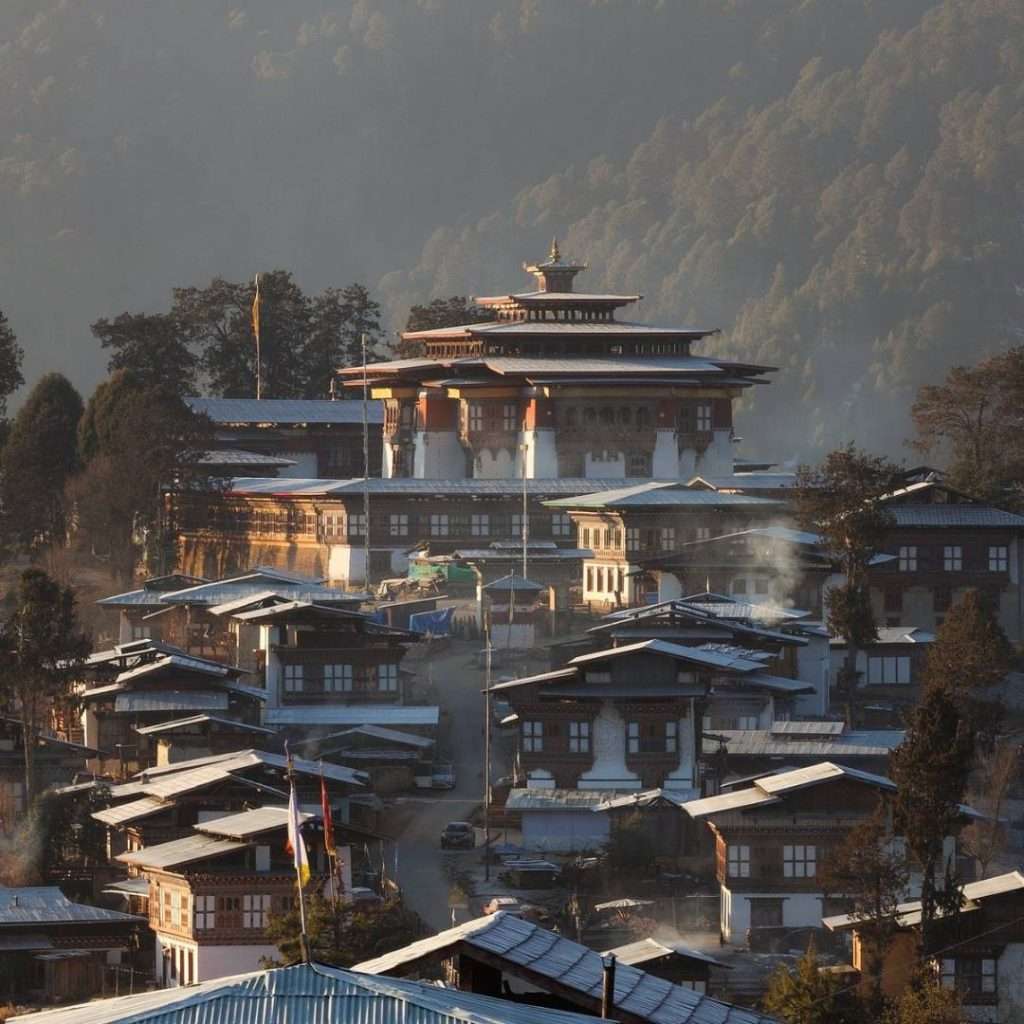
4. Spiritual Atmosphere: Accessible Temples vs. Sacred Sanctuaries
- Nepal: You can visit famous Buddhist sites like Boudhanath Stupa or Hindu temples like Pashupatinath with ease. Spiritual sites are often lively with both pilgrims and tourists.
- Bhutan: Monasteries here — from the cliff-hanging Tiger’s Nest to the riverside Punakha Dzong — are deeply sacred spaces. Access is respectful and often guided, ensuring cultural and religious etiquette is maintained.
Why Bhutan stands out: Spirituality permeates everyday life. Prayer flags flutter across mountain passes, and monks chanting in remote monasteries create an atmosphere of living devotion.
5. Cost & Accessibility
- Nepal: More budget-friendly, with varied options for flights, accommodations, and treks. Visas are available on arrival, and independent travel is straightforward.
- Bhutan: More expensive due to the SDF and guided travel requirement, but the cost covers accommodations, transport, guide services, and cultural entry fees — making it an all-inclusive cultural immersion.
Why Bhutan stands out: The value lies in exclusivity, sustainability, and personalized experiences. You pay more, but you also get more in terms of peace, authenticity, and care.
Final Thoughts: Which Should You Choose?
- Choose Nepal if you’re seeking budget flexibility, high-altitude trekking challenges, and a lively cultural blend.
- Choose Bhutan if you want a peaceful, spiritually rich, and culturally immersive experience with pristine landscapes and minimal crowds.
For many travelers, Nepal and Bhutan aren’t an either/or decision — they’re two chapters in a broader Himalayan journey. But if you want to step into a country that measures its success in Gross National Happiness rather than GDP, Bhutan offers something truly rare in today’s world.
Plan Your Bhutan Journey
At OMSHA Travel, we specialize in creating tailor-made Bhutan experiences — from valley tours to high-altitude treks, cultural festivals to private monastery stays. Let us help you discover the side of the Himalayas where nature, culture, and happiness live in perfect balance.

